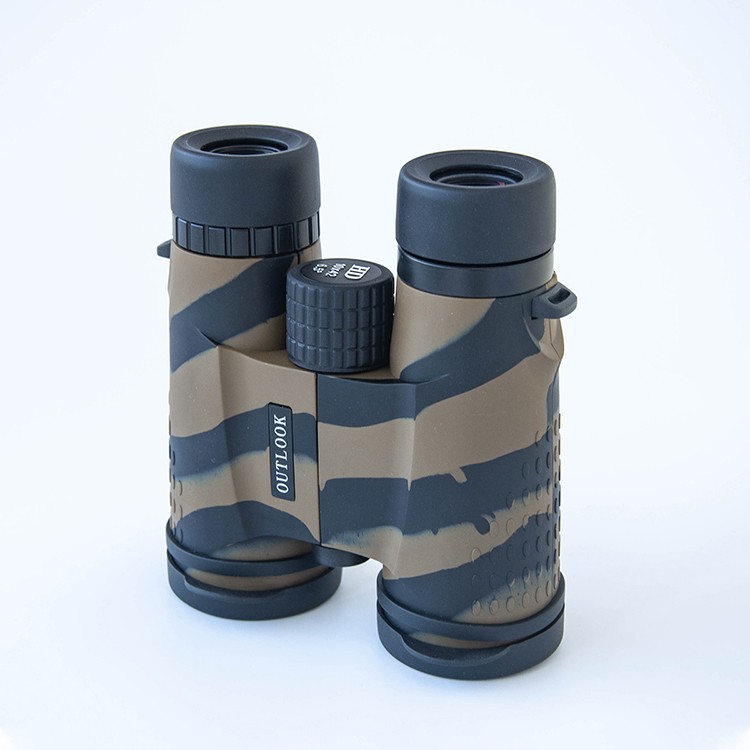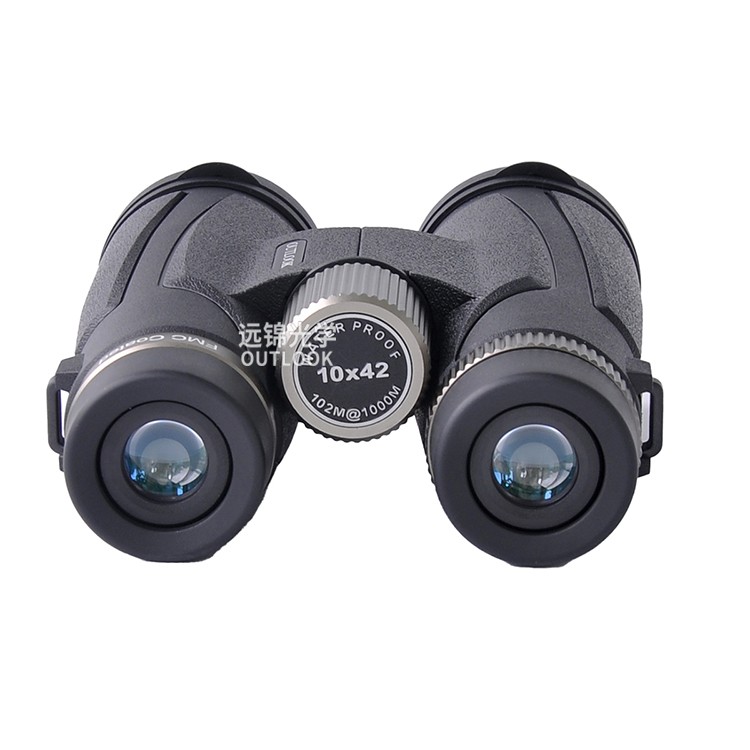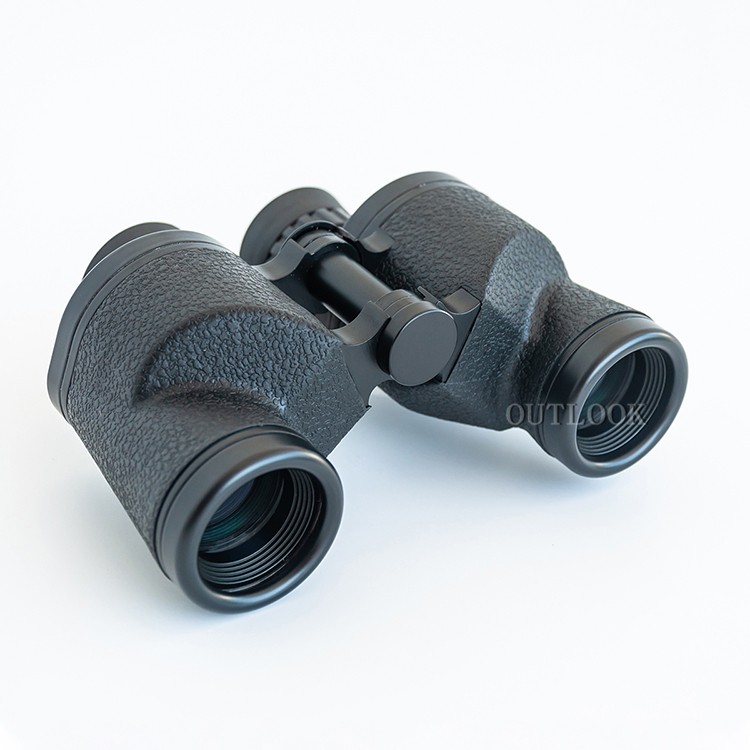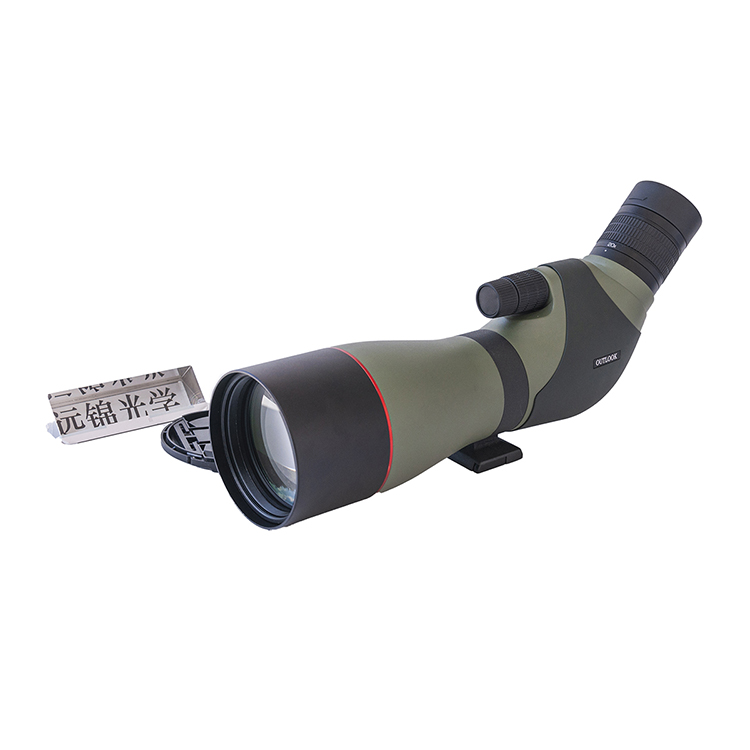Differences between ED binoculars and non-ED binoculars
1. Ability to control chromatic aberration
ED lenses: Reduce the difference in refractive index of light of different wavelengths through ultra-low dispersion materials (such as fluorite or artificial ED glass), significantly reduce chromatic aberration (such as purple fringing), especially in long focal length or high magnification scenes. For example, when observing at high magnification, ED binoculars can provide sharper and more realistic images.
Non-ED lenses: Relying on ordinary optical glass (such as crown glass and flint glass combination), chromatic aberration control is weak, especially in strong light or high contrast scenes, obvious dispersion may appear at the edges.
2. Applicable scenes and effect differences of ED binoculars and non-ED binoculars
High magnification scenes: ED lenses play a significant role in desktop binoculars (such as bird-watching binoculars, astronomical binoculars), because high magnification makes it easier to expose chromatic aberration. For example, Web page 1 mentioned that after the cost of ED materials has dropped in recent years, the performance gap between the ED binoculars and non-ED binoculars has gradually widened.
Handheld ED binoculars: The role of ED is limited. Ordinary users cannot detect the difference in daily observation, and the chromatic aberration problem may be masked by other optical designs (such as coating or lens combination). Some ED binoculars may even affect other performance (such as transmittance or sharpness) due to unreasonable cost allocation due to ED occupying the budget.

3. Cost performance of ED binoculars and non-ED binoculars
ED lenses are more expensive, resulting in the price of ED binoculars usually being 1.5-2 times that of non-ED versions.
Is it worth buying: For ordinary users or low magnification requirements, the non-ED binoculars are more economical; if you pursue professional photography or high-magnification observation (such as deep-sky objects), ED binoculars are more worth investing in.
4. Technical implementation and material type
ED material classification: Different ED binoculars have different performances. High-end ED lenses can approach the APO effect, but the cost is higher.
Relationship between APO and ED: APO needs to achieve achromatic aberration through a combination of multiple lenses (such as three-piece ED lenses), while ordinary ED lenses can only partially improve chromatic aberration. Therefore, products marked "ED APO" are usually better than simple ED lenses.
5. Market positioning and user selection of of ED binoculars and non-ED binoculars
Marketing and practicality: Some manufacturers use ED as a publicity gimmick, especially in the field of handheld lenses. Users should pay attention to the actual imaging effect rather than simple technical labels.
Recommended in professional fields: In astronomical photography or high-magnification observation, ED or APO lenses are the mainstream choice; while in ordinary viewing, travel and other scenes, non-ED lenses are sufficient to meet the needs.
Summary
The core value of ED lenses lies in chromatic aberration control, but its necessity depends on the usage scenario and budget. For high-magnification needs or professional users, ED is an important upgrade option; ordinary users do not need to pursue it blindly, and can give priority to products with overall balanced optical design.
How to choose between ED binoculars and non-ED binoculars
I. The core difference between ED and non-ED lenses
1. Chromatic aberration control ability
ED lenses: Using ultra-low dispersion glass (such as fluorite or artificial ED materials), by reducing the difference in refractive index of light of different wavelengths, chromatic aberration (such as purple fringing) is significantly reduced. Especially in high-magnification or high-contrast scenes (such as astronomical observation, bird watching), ED lenses can provide sharper and more realistic images.
Non-ED lenses: Relying on ordinary optical glass (such as crown glass and flint glass combination), chromatic aberration control is weak, and obvious dispersion may occur at high magnification.
2. Technical implementation and material grade
The performance of ED lenses is related to the material grade. For example, Japan's OHARA's FPL-53 glass has lower dispersion than ordinary ED glass, close to the APO (apochromatic) effect, but the cost is higher.
APO design usually requires a combination of multiple lenses (such as three-piece ED lenses), while ordinary ED lenses can only partially improve chromatic aberration.
II. Applicable scenarios and performance requirements
1. Situations where ED lenses are recommended
High-magnification observation: Desktop equipment such as astronomical binoculars and bird-watching scopes easily expose chromatic aberration at high magnification, and the advantages of ED lenses are more significant.
Professional photography needs: When shooting celestial bodies or high-contrast scenes, ED lenses can reduce the workload of purple fringing correction in post-processing.
Pursuing extreme image quality: If the budget is sufficient, ED lenses combined with high-quality coatings and lens group designs (such as APO) can provide imaging that is closer to "zero chromatic aberration".
2. Situations where non-ED lenses are sufficient
Daily handheld observation: In low-magnification scenarios such as travel and sightseeing, ordinary users can hardly detect the difference between ED lense and non-ED lense, and chromatic aberration problems may be compensated by coatings or other optical designs.

III. Key considerations when purchasing
1. Budget allocation
ED lenses require additional costs, and it is necessary to weigh whether it is worth paying a premium for chromatic aberration control. If the budget is tight, give priority to non-ED products with balanced optical design.
Be careful to avoid "ED for ED's sake": some mid- and low-end ED binoculars may sacrifice transmittance or sharpness due to unreasonable cost allocation, resulting in a decrease in overall performance.
2. Product type and design
Desktop binoculars: ED lenses have a significant effect at high magnifications. After the cost of ED materials has dropped in recent years, the performance gap between ED and non-ED has further widened. It is recommended to give priority to ED versions.
Handheld binoculars: ED lenses have limited improvements. It is recommended to pay attention to the overall optical quality (such as coating, prism type) rather than simply pursuing the ED label. For example, although the new Pentax ED binoculars emphasize chromatic aberration compensation, the actual effect needs to be evaluated in combination with magnification and objective lens size.
3. Environmental adaptability
ED lenses are more sensitive to temperature changes. If used in extreme environments (such as extreme cold or large temperature differences)



